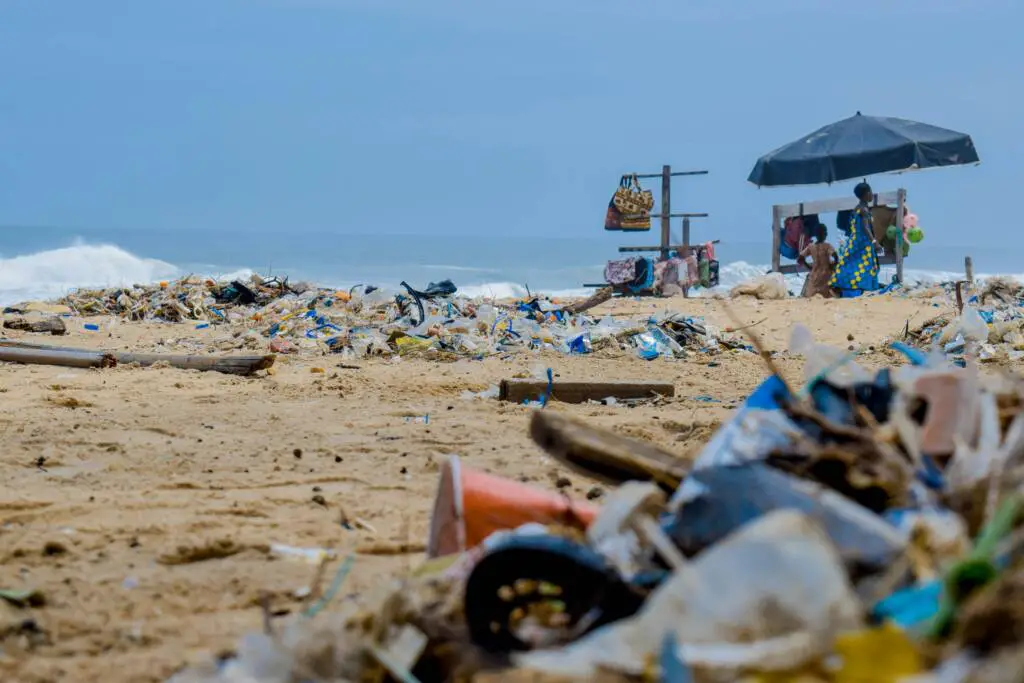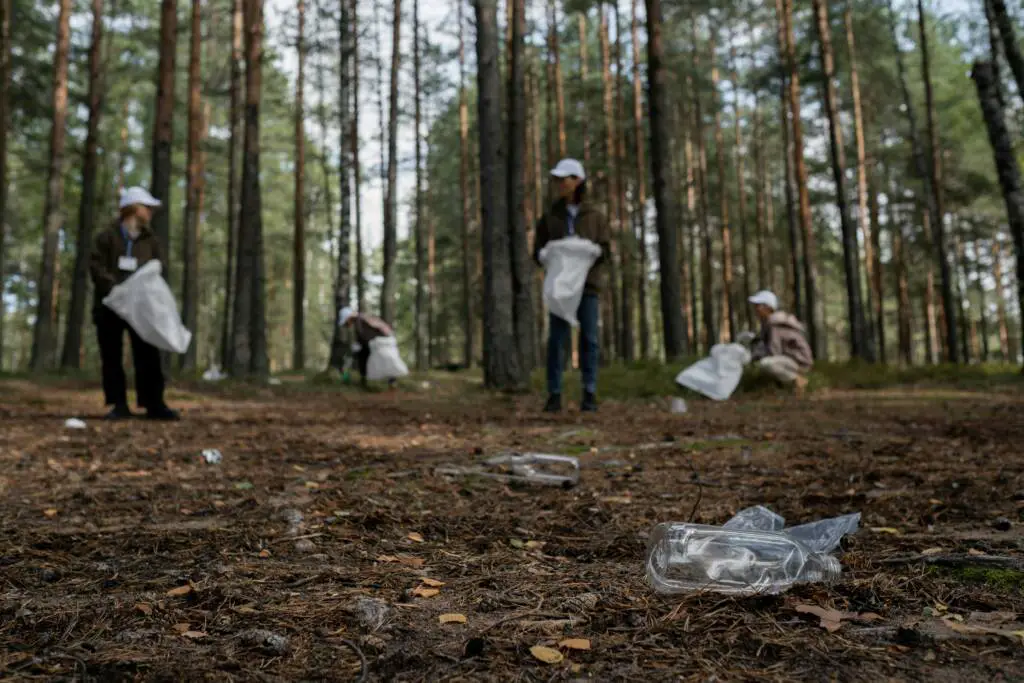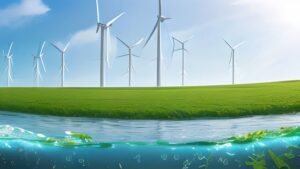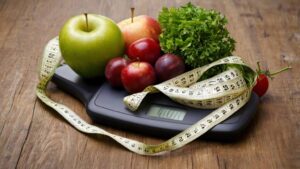Impact of Plastic Pollution

Plastic pollution has become a global crisis with far-reaching consequences for our environment and society. The proliferation of plastic waste in our oceans, rivers, and landfills has created a pressing need for immediate action to address its impact. From harming marine life and ecosystems to polluting our water sources and contributing to climate change, the detrimental effects of plastic pollution are undeniable. In this article, we will explore the multifaceted impact of plastic pollution and discuss strategies for reducing and mitigating its effects on our planet.
What is Plastic Pollution?
Plastic pollution refers to the accumulation of plastic waste in the environment, particularly in our oceans, rivers, and landfills. It is a global environmental issue that poses significant threats to our ecosystems and human health. Plastic pollution occurs when plastic products, such as bottles, bags, and packaging materials, are discarded and improperly disposed of, leading to their release into the environment.
Key Takeaways:
Plastic pollution is the accumulation of plastic waste in the environment.
It poses significant threats to ecosystems and human health.
Improper disposal and recycling contribute to plastic pollution.
The Growing Crisis of Plastic Pollution
Plastic pollution has become a growing crisis due to its pervasive presence and detrimental effects. It is estimated that over 8 million metric tons of plastic waste enter the oceans each year, wreaking havoc on marine life and ecosystems. Plastic pollution not only harms wildlife but also affects human activities such as fishing and tourism.
A formal definition of Plastic Pollution:
Plastic pollution is formally defined as the presence of plastic debris in the environment that exceeds its natural degradation rate. This means that plastic waste accumulates at a faster rate than it can naturally break down, leading to its persistence in the environment for hundreds of years.
How does plastic end up in the environment?
Plastic waste enters the environment through various sources. Improper waste management, including littering and illegal dumping, is a significant contributor to plastic pollution. Additionally, inadequate recycling systems and limited awareness about plastic’s environmental impact further exacerbate the problem. Plastic products also break down into microplastics, which are tiny particles that enter our waterways through runoff and are subsequently ingested by marine life.
The long-lasting effects of plastic pollution:
Plastic pollution has long-lasting effects on the environment, ecosystems, and wildlife. Marine animals often mistake plastic debris for food, leading to choking, entanglement, and ultimately death. Additionally, plastic particles can enter the food chain, posing potential risks to human health. The accumulation of plastic waste also damages coastal habitats, pollutes water sources, and disrupts the balance of ecosystems.
Plastic pollution and its impact on marine life:
Marine life is particularly vulnerable to the effects of plastic pollution. Sea turtles, dolphins, whales, and seabirds are frequently found entangled in plastic debris or with stomachs filled with plastic bits. This not only affects their survival but also leads to population declines and ecological imbalances. The impact of plastic pollution on marine biodiversity is a significant concern for environmentalists and conservationists.
The Urgent Need for Action
Given the severity of plastic pollution and its consequences, there is an urgent need for action to mitigate and prevent further damage. Governments, organizations, and individuals should prioritize efforts to reduce plastic pollution and implement sustainable practices.
Effects of Plastic Pollution on Human Health
Plastic pollution not only harms the environment and marine life but also poses risks to human health. The ingestion of microplastics through contaminated food and water can potentially lead to adverse health effects, including hormonal disruptions and organ damage. Moreover, the chemicals used in the manufacturing of plastics, such as bisphenol-A (BPA), have been linked to various health issues, including cancer and reproductive disorders. It is crucial to address plastic pollution, not only for the sake of the environment but also for human well-being.
Government Policies and Regulations to Reduce Plastic Pollution
To combat plastic pollution, governments worldwide are implementing policies and regulations to reduce plastic consumption and enhance waste management systems. Some examples include the ban on single-use plastics, the implementation of plastic bag fees, and the promotion of recycling and circular economy practices. These measures aim to minimize plastic waste generation and encourage the use of more sustainable alternatives.
Innovative Solutions to Combat Plastic Pollution
Innovative solutions are emerging to combat plastic pollution, ranging from new materials and technologies to innovative recycling methods. Bio-based and biodegradable plastics, for example, offer alternatives to conventional plastics that are more environmentally friendly. Likewise, advancements in recycling technologies, such as chemical recycling and waste-to-energy conversion, show promise in reducing plastic waste and recovering valuable resources.
Plastic Pollution Awareness and Education
Raising awareness about plastic pollution is crucial in mobilizing individuals and communities to take action. Education campaigns, documentaries, and social media initiatives play a vital role in spreading knowledge about the impact of plastic pollution and encouraging behavior change. Schools and educational institutions should also incorporate environmental education into their curriculum to empower young generations with the necessary knowledge and skills to tackle plastic pollution.
Why Individuals Should Take Responsibility

While governments and organizations play a crucial role in addressing plastic pollution, individual actions are equally important. By making small lifestyle changes, such as reducing the use of single-use plastics, properly disposing of waste, supporting eco-friendly initiatives, participating in cleanups, and spreading awareness, individuals can contribute to the collective efforts in combating plastic pollution. Recognizing the individual responsibility in addressing this global issue is key to creating a sustainable future.
How to Reduce Plastic Pollution
Now that we understand the devastating impact of plastic pollution and the need for collective action, here are some practical steps individuals can take to reduce plastic waste in their daily lives:
1. Cut Down on Single-Use Plastics
Single-use plastics are some of the biggest contributors to plastic pollution. By identifying and avoiding single-use plastic items such as plastic bags, straws, cups, and cutlery, individuals can significantly reduce their plastic footprint.
How to identify single-use plastics:
Look for plastic items designed for one-time use (e.g., plastic shopping bags, disposable cutlery, beverage bottles).
Check for recyclability symbols (such as the triangle with a number) on packaging, as plastics with low recycling rates are often classified as single-use.
2. Recycle and Dispose of Plastics Properly
Proper recycling and waste disposal are essential to prevent plastic waste from ending up in the environment. Individuals should familiarize themselves with local recycling guidelines and ensure that plastic items are cleaned and sorted correctly before putting them in recycling bins.
3. Support Plastic-Free Initiatives
Support businesses and organizations that prioritize plastic-free practices. Choose products and services that use eco-friendly alternatives to plastic, such as reusable bags, refillable water bottles, and compostable packaging.
4. Promote and Participate in Cleanups and Beach Conservation Efforts

Participate in beach cleanups or other conservation activities to help remove plastic waste from the environment. By volunteering or supporting organizations engaged in conservation efforts, individuals can make a tangible difference in reducing plastic pollution.
5. Spread Awareness and Educate Others
Raise awareness about plastic pollution by sharing information and resources with friends, family, and social media followers. Encourage others to adopt plastic-free practices and join the fight against plastic pollution. Collaboration and collective action are essential in creating lasting change.
Plastic Pollution and the Future
The future of our planet depends on addressing plastic pollution and transitioning towards more sustainable practices. To achieve this, it is crucial to invest in research and development of alternative materials, improve waste management infrastructure, and enforce stricter regulations on plastic production, usage, and disposal.
Plastic Pollution Awareness Campaigns and Movements
Various campaigns and movements have been launched to raise awareness about plastic pollution and advocate for change. Examples include “Plastic Free July,” which encourages individuals to go plastic-free for a month, and the “Break Free From Plastic” movement, which calls for companies to reduce their plastic footprint and invest in sustainable alternatives.
Success Stories in Plastic Pollution Reduction
Several success stories demonstrate that concerted efforts can make a significant impact in reducing plastic pollution. For instance, countries like Rwanda and Kenya have banned plastic bags, resulting in substantial reductions in plastic waste. This showcases the effectiveness of policy interventions in addressing the issue.
Plastic Alternatives and Sustainable Packaging
The development and adoption of plastic alternatives and sustainable packaging are pivotal in reducing plastic pollution. Biodegradable plastics, compostable packaging materials made from renewable resources, and innovative materials like mushroom mycelium packaging offer promising alternatives that can minimize the environmental impact of packaging.
Supporting Companies and Brands Committed to Plastic-Free Practices
Consumers can support companies and brands that prioritize plastic-free practices and offer sustainable alternatives. By choosing products and services from environmentally conscious businesses, individuals can drive demand for plastic alternatives and contribute to the reduction of plastic pollution.
Conclusion
Plastic pollution is a severe global crisis that requires immediate attention and action. Its devastating impact on the environment, marine life, and human health cannot be ignored. By understanding the causes and consequences of plastic pollution, supporting policy changes, adopting sustainable practices, and raising awareness, we can collectively work towards mitigating this problem and building a plastic-free future for generations to come. It is up to individuals, governments, and businesses to make a difference and create a world where plastic pollution is no longer a threat.
https://7thavewellnessblog.com/?p=4708
https://www.epa.gov/choose-fish-and-shellfish-wisely/epa-fda-advice-about-eating-fish-and-shellfish
FAQs
Q: What is the impact of plastic pollution on the ocean?
A: Plastic pollution in the ocean poses a severe threat to marine life, as animals can ingest plastic pieces or get entangled in plastic debris, leading to injuries and death. Additionally, plastic pollution disrupts marine ecosystems and can harm coral reefs and other fragile marine environments.
Q: How do microplastics contribute to climate change?
A: Microplastics, which are small plastic particles less than 5mm in size, can absorb and release greenhouse gases. When these microplastics end up in the environment, they contribute to the overall levels of greenhouse gas emissions, exacerbating climate change.
Q: What are the health impacts of plastic pollution?
A: Plastic pollution can have direct and indirect health effects on humans and animals. For example, the chemicals present in plastics can leach into the environment and contaminate food sources, leading to potential health risks such as hormonal disruptions and reproductive issues.
Q: How does the production of plastic contribute to the plastic problem?
A: The production of plastic involves the use of fossil fuels, which not only depletes non-renewable resources but also contributes to greenhouse gas emissions. This perpetuates the global plastic pollution crisis by increasing the amount of plastic waste in circulation.
Q: What are the environmental impacts of single-use plastic products?
A: Single-use plastic products, such as plastic bags and straws, contribute significantly to plastic litter and pollution. These items are often discarded after a brief use, ending up in landfills or oceans where they can harm wildlife and ecosystems.








